This figure is the Big-scaled Redfin, known in Japan as Ugui, Pseudaspius hakonensis (originally posted as Tribolodon hakoensis, but the genus was updated in 2011), number 07 from the first series. It’s the first non-salmonid since the first figure, the Ayu , a smelt. The Big-scaled redfin is one of many true minnows referred to as a ‘dace’, which is not specifically defined as anything other than a type of minnow (kind of a pointless word then…).
Classification: Fish
Huchen (Freshwater Fish Pictorial Book, Series 1, revised release by Yujin)
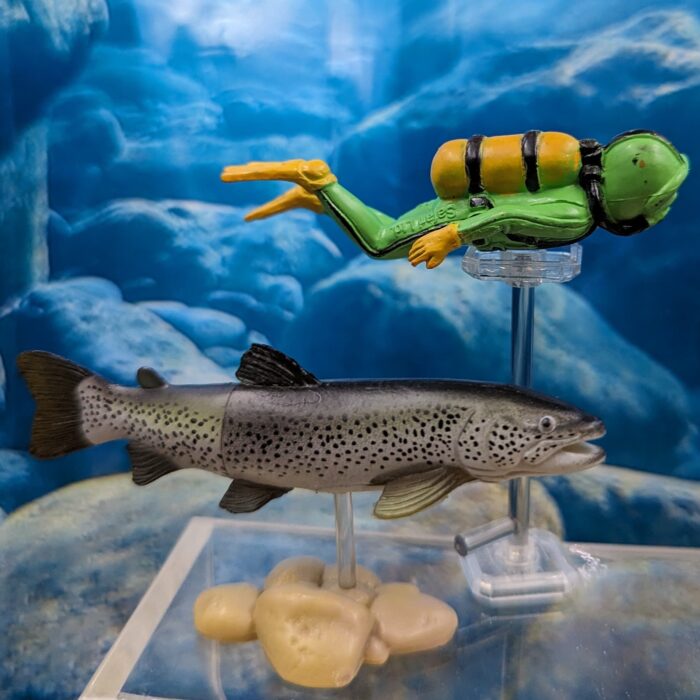
This figure is the Japanese Huchen, also known as Sakhalin taimen, Parahucho perryi (apparently, renamed from Hucho), number 06 from the first series. This primitive member of the trout and salmon family is found in limited areas of the northwest Pacific—Hokkaido island in Japan, the Russian Sakhelin Island, and far-eastern portions of mainland Russia.
Cherry Salmon, breeding phase special figure (Freshwater Fish Pictorial Book, Series 1, revised release by Yujin)
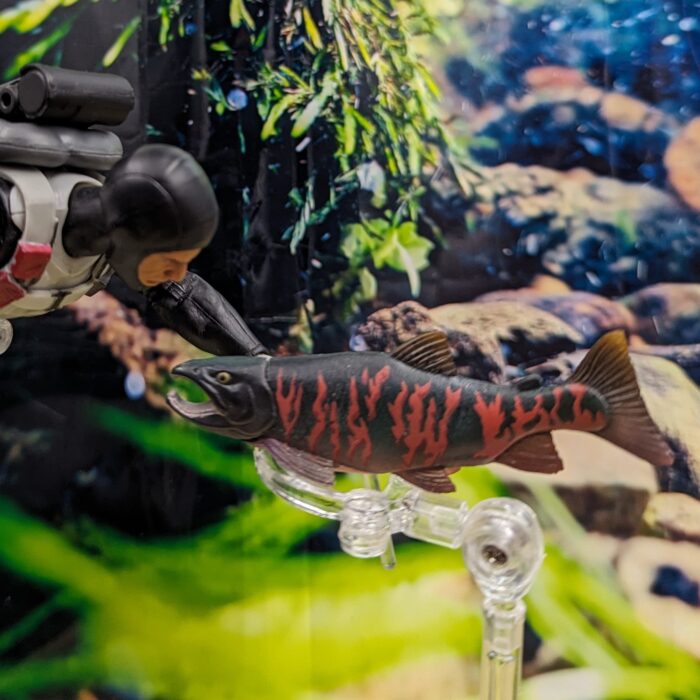
This figure is represents a breeding colour Cherry Salmon (or Masu Salmon), Oncorhynchus masou masou . It is stamped with a number 5—meaning that while this figure may share the name of figure 03 (the ‘normal’ cherry salmon, written about here) it is a re-paint of the Chum Salmon figure (posted here).
Chum Salmon (Freshwater Fish Pictorial Book, Series 1, revised release by Yujin)
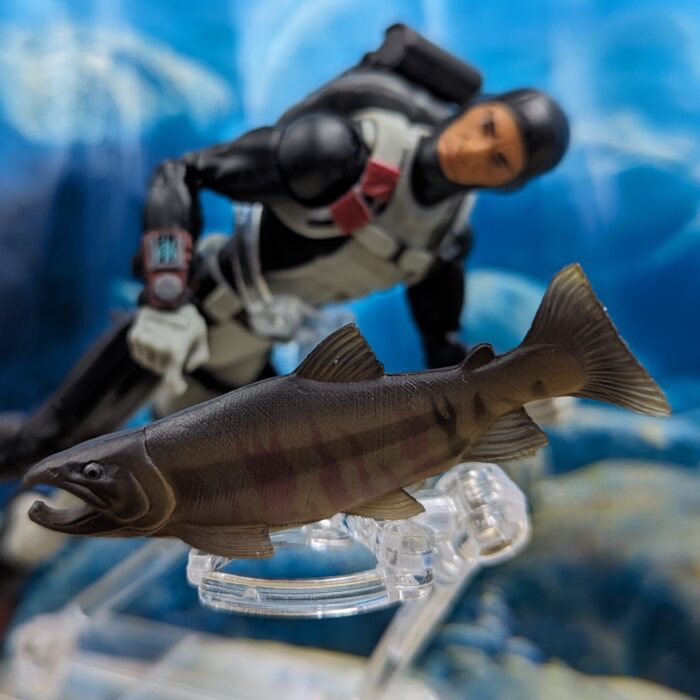
This figure is the adult Chum Salmon, also known as Dog Salmon or Keta salmon, Oncorhynchus keta, number 05 from the first series. This trout is widespread throughout Pacific Asia and North America, ranging widely in the oceans and travelling far inland for breeding. The Chum salmon is a very deep bodied salmon species.
Rainbow Trout (Freshwater Fish Pictorial Book, Series 1, revised by Yujin)
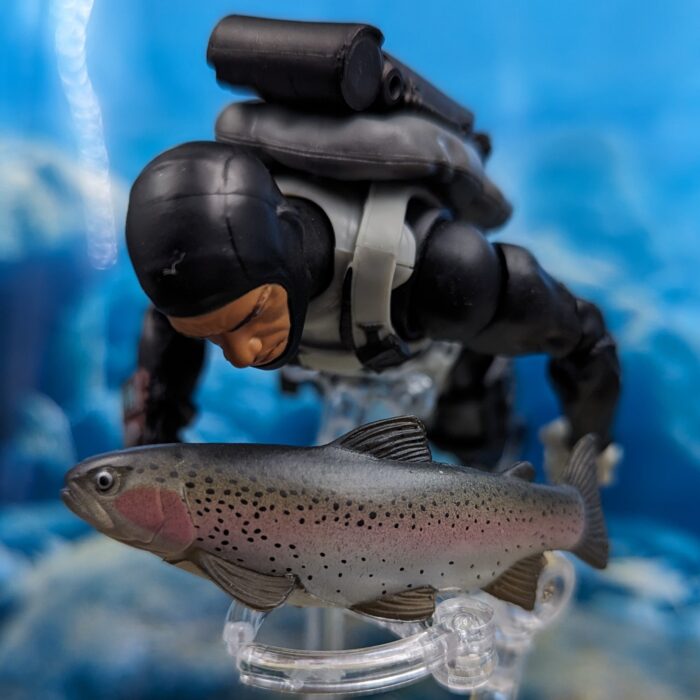
This figure is the Rainbow Trout, probably one of the most familiar North American game fish, Oncorhynchus mykiss, number 04 from the first series. This trout is widespread throughout North America, and parts of the Kamchatka peninsula; they are also introduced into many other places including, of course, Japan.
Cherry Salmon (Freshwater Fish Pictorial Book, Series 1, original release AND revised release by Yujin)
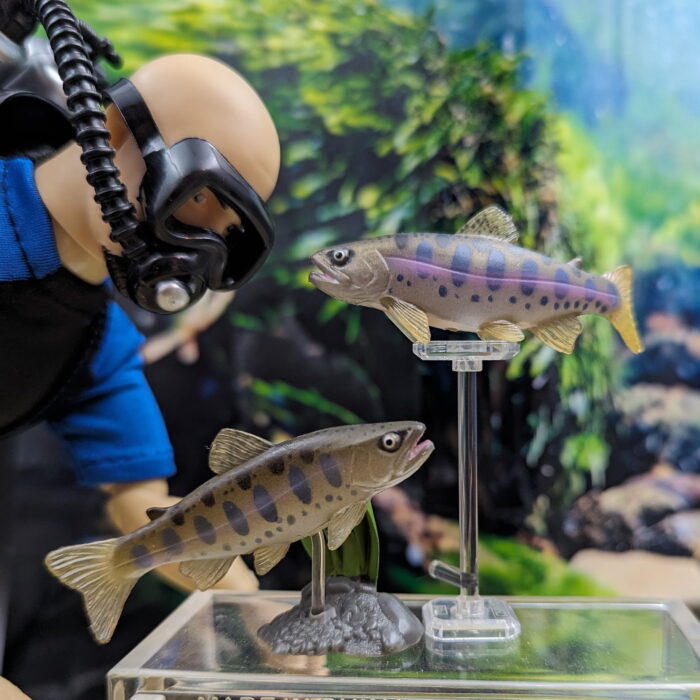
This figure is the Cherry Salmon (sakura masu in Japan, meaning cherry troug; the landlocked form is known as Yamame), Oncorhynchus masou masou, number 03 from the first series. This salmon is a widespread, anadromous subspecies found along the Pacific Coast in Japan and Korea. Not surprisingly, Cherry Salmon are fished commercially and as game fish.
Dolly Varden (Freshwater Fish Pictorial Book, Series 1, revised release by Yujin)
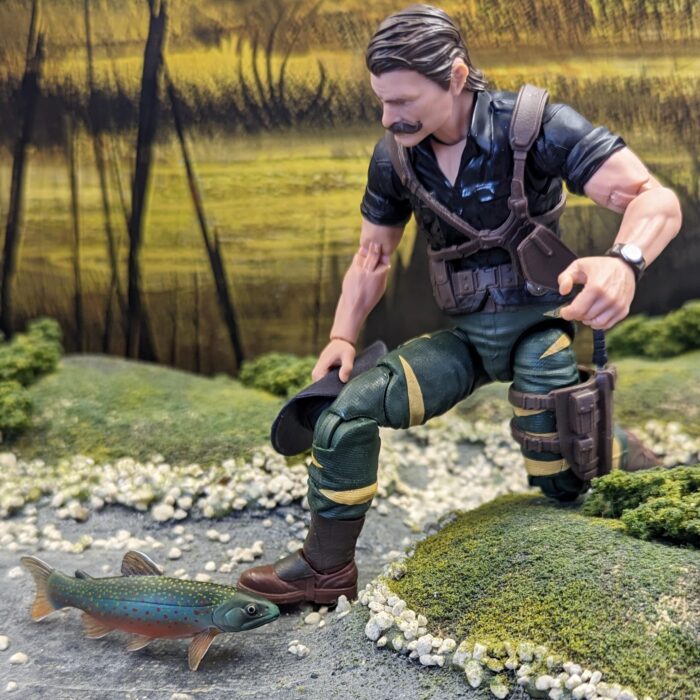
This figure is the Japanese Dolly Varden (also known as Miyabeiwana or Miyabe Char in Japan), Salvelinus malma miyabei, a Secret Figure from the first series revised release (so, the third release of series 1 for those keeping track). I believe it is numbered #17 in the set, although it is based on model #2.
White-spotted Char (Freshwater Fish Pictorial Book, Series 1, revised by Yujin)
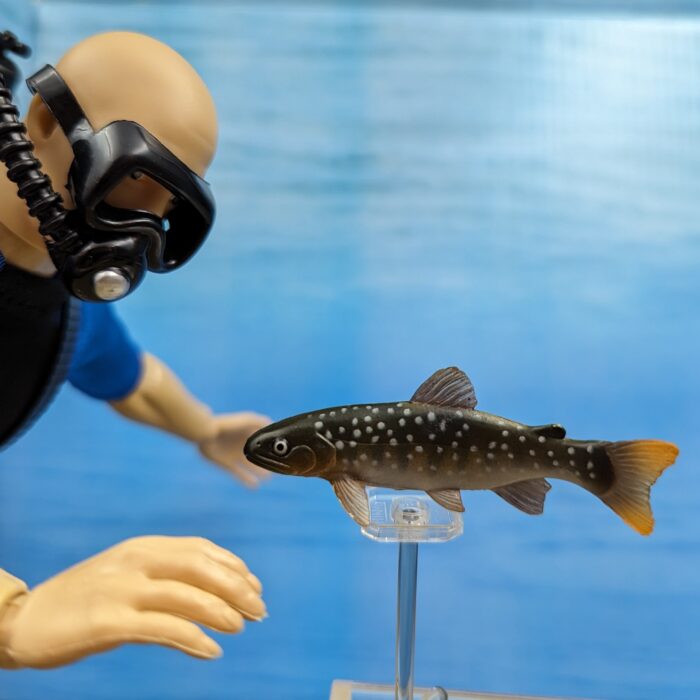
This figure is the White-spotted Char (also known as iwana in Japan), Salvelinus leucomaensis, number 02 from the first series. This salmon and trout relative is a fish found in East Asia, and can be landlocked or ocean-running. As with many Japanese fish models (though not all) it is widely fished for.
Tiger Shark (Sea Life by Schleich)
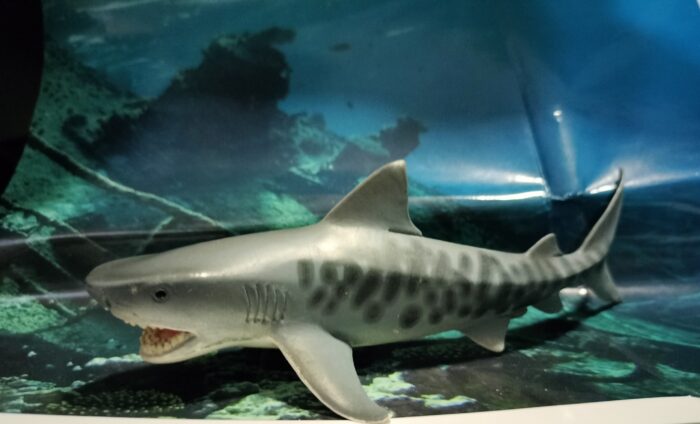
Review and images by JimoAi; edited by bmathison1972
To close out my Schleich figure reviews, I would be looking into their tiger shark (Galeocerdo cuvier). They are the largest of of the requiem sharks, averaging 400-550 cm from snout to the tip of the caudal fin. They are found in tropical and temperature waters and are characterized by their squarish snouts and stripes on their body, which give them their name.
Ayu (Freshwater Fish Pictorial Book, Series 1, revised by Yujin)
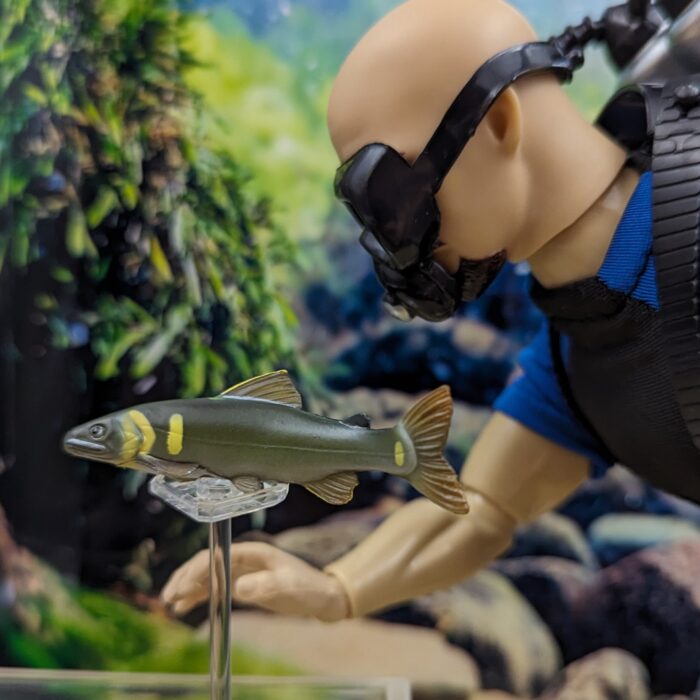
Author’s note: Back in 2015 I wrote a series of walkarounds depicting and describing the breadth of the Yujin Freshwater Series, AKA Yujin Primary Freshwater Fish Pictorial Book. At that time, each species was described in brief, each figure was described in brief, and a number of photos were included. Some were updated with variants as I found them in my hunts—or updated when I learned more about them!
Saltwater Fish (Mini-verse Mini Lifestyle by MGA)
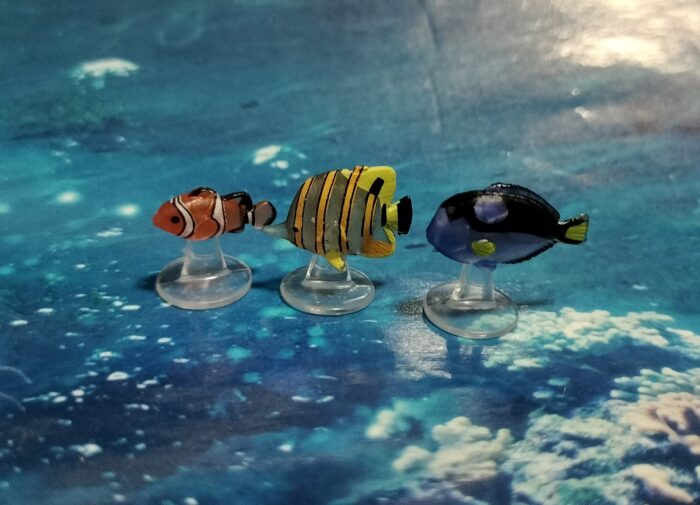
Review and images by JimoAi; edited by bmathison1972
I always have a love-hate relationship to blind bag/box figures. On one hand it’s thrilling to try to get what you want, but if you’re on a budget, it can be a nightmare especially if the figure you want isn’t appearing despite spending a lot of money.
Great Hammerhead Shark, 2020 (Sea Life by Schleich)
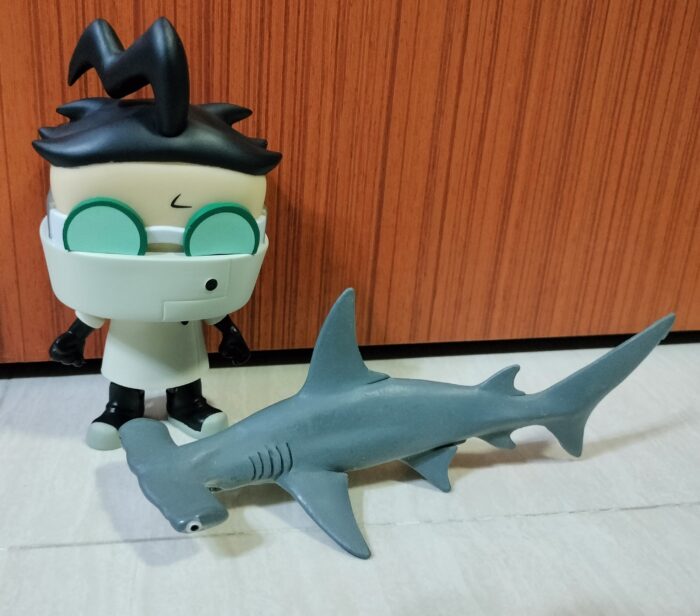
Review and images by JimoAi; edited by bmathison1972
The great hammerhead (Sphyrna mokarran) is the largest of all hammerhead sharks, attaining lengths of 400-600 cm in the largest specimens, though they mostly average smaller. Outside of their great size, their most distinctive features are their cephalofoils being relatively smooth, tail fin, and tall dorsal fin, which can get up to 180 cm in the largest and most extreme cases, although it is rare nowadays.




